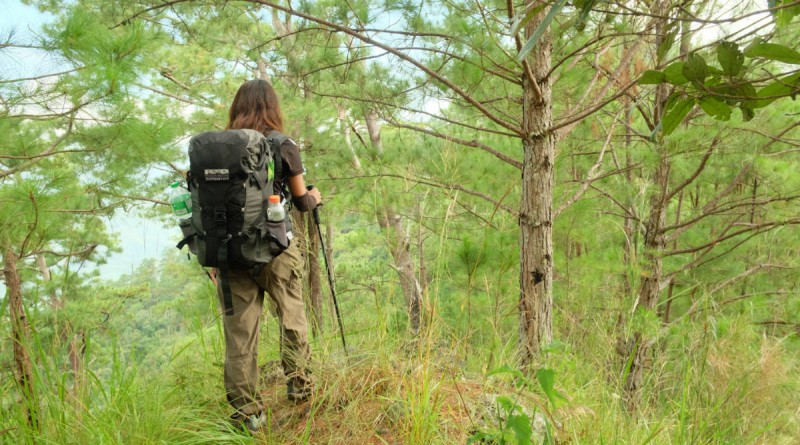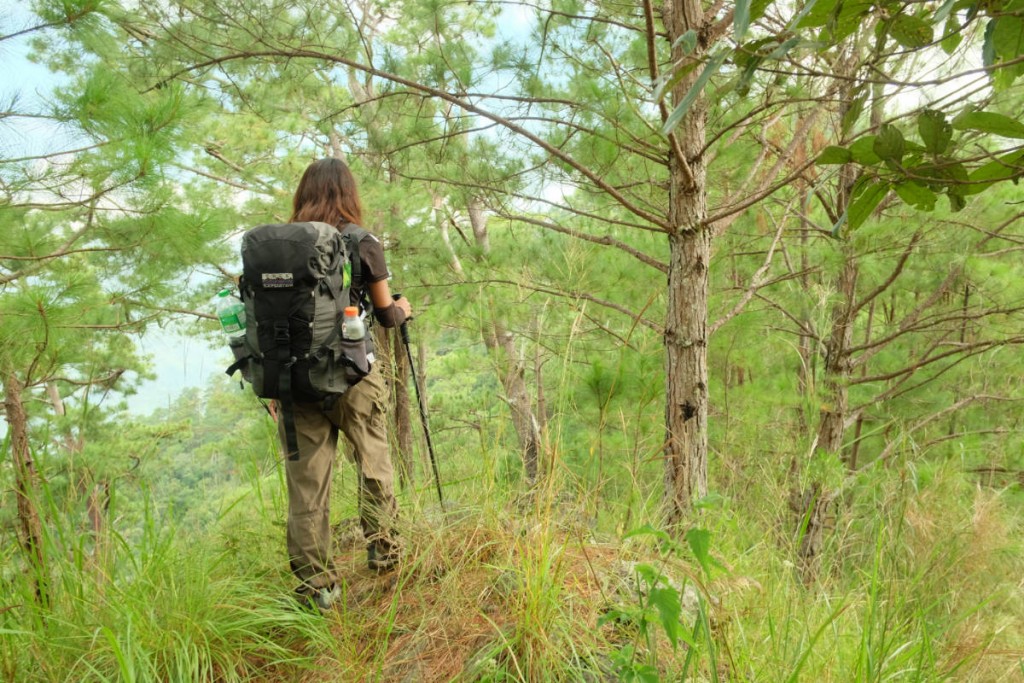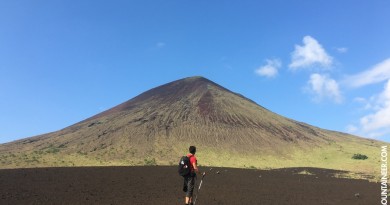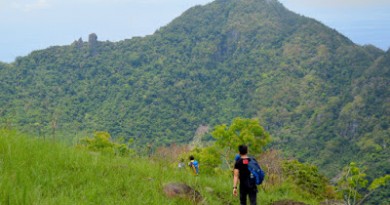Letter to a young mountaineer, XI: The friends inside your backpack
by Gideon Lasco
Friendship is not a word one would normally use with non-humans, let alone non-living things, but it is a good way to think of your relationship with your hiking gear. As you keep hiking, you will keep accumulating all kinds of products, and like good friends, you must treat them with care.
I still remember my first bits and pieces of hiking gear: A red Ground Zero trekking pants, a Kovea stove, and a Coleman tent. All three joined me in my first hike up Mt. Apo, and all three participated in some of my earliest adventures.
The trekking pants was a gift from a high school classmate and I used it everywhere; it has probably joined me in over 50 mountains; after 12 years, it is still amazingly intact and wearable – save for some scratches it incurred from the thorns of Mt. Mantalingajan and the rough edges of Mt. Guiting-Guiting.
The Kovea stove – also 12 years old – is also still in good working condition: it has gone through highs and lows: including the high attitude of Snow Mountain in Taiwan and its low temperatures; in that hike, we forgot to bring a lighter but the long-broken igniter of the stove miraculously worked! It was one of those mini-triumphs that only hiking and camping can bring.
As for the Coleman tent, I gave to our guide in Mt. Kanlaon – Kuya Rey Estelloso – after it completed the highest peaks of Luzon, Mindanao, and finally, Visayas; I later heard it was put to very good (and frequent) use until it was finally retired. It was also a very memorable tent because I used it since my Eagle Scout days in high school. A very basic tent that wouldn’t have withstood a night in Tarak Ridge, it was nonetheless my companion in my first Pulag hike in 2003, back when the Ambangeg-Ambangeg hike was a three-day affair. And it was also the tent where I sat, sleepless, on that humiliating – but ultimately-enlightening – night in Mt. Apo in 2005; where I mistook the raging river for a storm, and lightning for shooting stars.
Many other pieces of gear came and went. Some got wrecked, including a pair of La Sportiva shoes that I foolishly dipped into a fumarole in Cagua Volcano, and a G2-tested Merrells that was mistakenly baked in heat of the summer sun (I retired it that same year, leaving it in my dorm in Tokyo after a hike up Mt. Fuji). Some clothes are more durable than others: I still cling on to my Patagonia ultra-light down jacket, the Merino wool layers I got a a longtime ago, and an ever-durable earth pad, that scaffolds my backpack.
Others simply got too old, not because of sheer age, but because of the wear and tear of being under the possession of someone who hikes an average of 30-40 mountains a year. The mesh pockets of backpacks, unfortunately, don’t last that long in overgrown trails such as those you find in Mt. Baloy Dako in Antique or the veritable Talomo-Apo traverse back when it was rarely done.
Losing them is another possibility, especially when it comes to small items like headlamps or trekking poles. I’ve lost count of how many trekking poles I’ve left behind, and my only consolation is the thought that someone picked them up and put them to good use.
Why I am mentioning my experiences with hiking gear? Because I want you to know that they are part of your hiking journeys, and you must value them not just for the utility they give, but for the memories they have shared with you – and the way they have formed part of your habitus as a mountaineer. Things, after all, are not static, like fine leather shoes that get more comfortable as you wear them more, hiking gear can grow into you; they can become more comfortable, and you can also learn to use them more efficiency: you may even learn new uses for them: like the trekking poles that can become part of your tent system. By using and cherishing them, they become a more valuable, useful, and enjoyable part of your adventure.
The alternative is to view them, just like many other things in our modern lives, as mere objects of consumption: as items that one can quickly grow tired of – and easily replace. Being fashionable, of course, is a nice bonus, and I will not deny that I consider it too when I choose the designs and the colors of hiking gear I buy. But in the mountains, function must always come first. And, if one is to espouse an ethos of responsible living, one must not consume (or purchase) more than what is needed. Hence, the need to resist a society that wants you to keep buying.
Hence, the need to treat one’s hiking gear as friends.
Of course, it is also good to have extras, but there is really a danger of accumulating too much gear. At one point I had eight pairs of hiking shoes! I only keep four now: one for the alpine expeditions, one for multi-day hikes, and two for dayhikes: one as a reserve. The rest, I give away to friends or mountain guides.
One important challenge – which we rarely consider – is allowing our hiking gear to be useful. They were designed for the outdoors, and there they must be as much as possible, not in your basement. Let go of your outdoor gear if you’re no longer using them, and give them to someone else who will be able to maximize them. When you buy something, it’s your responsibility to use it. Things, like humans, must be allowed to live out their purpose.
What about brands, you may ask. I have no problem with them, but take note that brands are mere signifiers – not things-in-themselves. When they signify quality, and you’ve developed a trust in a certain brand, then by all means, patronize it. The problem is when the brand becomes an end in itself, chosen for itself and not for the durability, comfort, or other attributes you’ve learned to associate with it. In my experience, products coming from the same brand can vary in quality, so you must learn to evaluate the model – not the brand – itself. If the brand happens to be a “fashionable” one, then let it be a happy coincidence, not a decisive one. Take note, too, that some of the best brands in the world may be ones you’ve never heard of.
One final note about hiking gear is that you should never judge others by the gear they have or the clothes they wear. Unfortunately, people who are “all new” or “branded” gear are mocked for their attempt to appear rich or fashionable, while those who buy second-hand gear are mocked for the opposite reasons. As I keep emphasizing, people you meet in the outdoors come from all walks of life, and what may be luxurious for some may be quotidian for others. Also, some may be beginners who need to be educated – not ridiculed.
And the best way to educate is to lead by example. As an outdoorsman, you should know how beautiful – yet how fragile – our planet is, and this is a perspective that you must strive to share. By being responsible about your gear, you also teach the importance of consuming only what you need; of striving for minimal impact not just outdoors but in our everyday lives.
It has been said that new friends are silver, old friends are gold. As you continue your hiking journey, don’t forget to treasure the friends inside your backpack.
Manila
November 21, 2017
LETTERS TO A YOUNG MOUNTAINEER
Personal essays by Gideon Lasco
I: A letter to a young mountaineer
II: Why do accidents happen?
III: Of doing and loving
IV: A difficult situation
V: Wise words from an old man
VI: The Philippines that I love
VII: The calling
VIII: The girl who climbs mountains
IX: A mountaineer’s legacy
X: What beginners can teach us
XI: The friends inside your backpack
XII: Unfollowing one’s self in social media







Leave a Reply
Be the First to Comment!